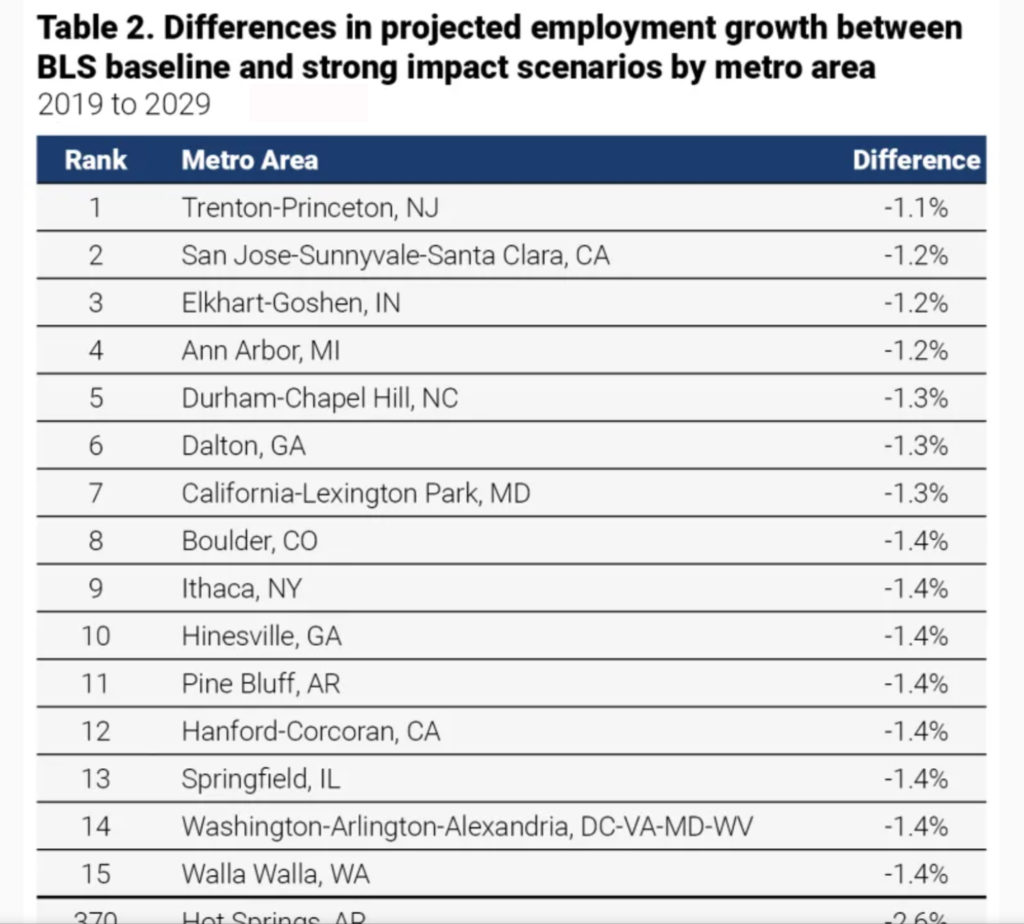An analysis projects the San Jose Metro Area to be among the least affected
By Mark Muro and Yang You, Brookings, March 11, 2021
“What will the Covid-19 aftermath mean for regional employment growth and local labor markets?
“[To answer this question], we use a new projection of national industry trends from the Bureau of Labor Statistics to estimate the pandemic’s longer-term impact on states and metropolitan areas through the end of the decade.
“The projections are noteworthy because they represent a plausible effort to forecast factors such as the nation’s increased avoidance of interpersonal contact, firms’ embrace of telework, and expanded demand for information technology (IT) — all amid plenty of ongoing uncertainty.
“Across the entire northern tier of the nation, greater orientation to scientific, information, or manufacturing pursuits and less reliance on leisure, tourism, and retail activity means that city regions there may see relatively narrower employment growth slowdowns in the pandemic’s aftermath. The list of the least-negatively affected metropolitan areas is dominated by “superstar” tech centers (San Jose, Calif., Washington, D.C., and Boston), and university towns strong in science and IT (Trenton-Princeton, N.J., Ann Arbor, Mich., Durham-Chapel Hill, N.C., Boulder, Colo., and Ithaca, N.Y.) […]

“To be sure, these forecasts (like the BLS forecasts underlying them) in no way propose precise estimates of projected change, and they depend on uncertain assessments of the longer-term impact of a still-evolving health crisis.
“Still, the BLS’ new forecasts — mapped onto places — provide a useful caution. Above all, they underscore the often drawn-out aftereffects of major economic shocks. Even amid optimistic forecasts and encouraging early signs, the complicated reality of recoveries remains the same.”
Read the full article here. (~ 4 min.)

